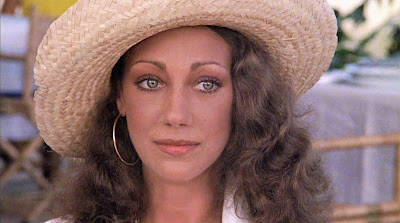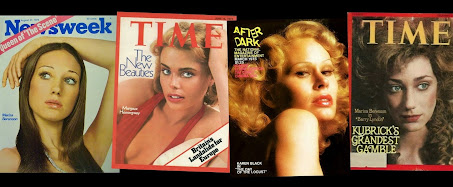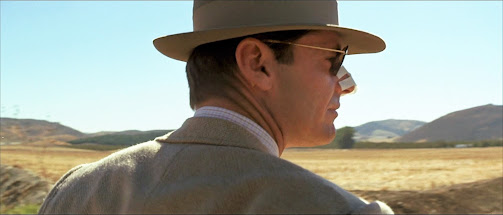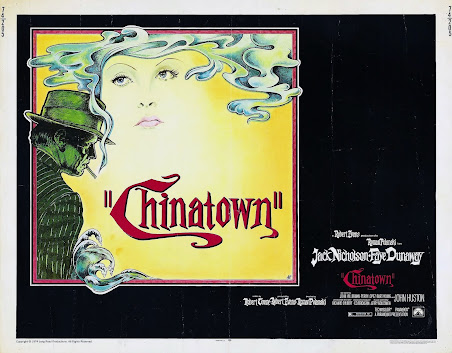This absurd (and absurdly entertaining) action-adventure flick from the days of polyester, poppers, and Plato’s Retreat has to be one of the most assertively engaging “70s aesthetic” films I’ve ever seen that wasn’t actually set in a disco. The cocaine-thin leading ladies (not divulging anything, that’s what the look was called) sport clunky jewelry, epic perms, and dramatic eye shadow while serving up a veritable fashion parade of outré late-‘70s resort wear. Meanwhile, you can practically smell the Aramis Cologne wafting from the hirsute, heavily-tanned, gold-chained chests peeking out from behind the earth-toned, wide-collared and wide-open Quiana shirts of the film’s blow-dried leading men.
Set in Brazil and cast with what look to be the stragglers from a particularly off night at Studio 54 or Xenon, Killer Fish is a disarmingly fun dishonor-among-thieves jewel heist flick with a bit of post-Jaws perils-of-the-deep action thrown in. And by thrown in, I mean literally. For unbeknownst to his fellow partners in crime, the ringleader behind the theft of an emerald mine tosses 100 deadly, rapidly-breeding piranha into a nearby reservoir to act as razor-toothed security guards protecting the multimillion-dollar cache of stolen jewels stashed way, way down...deep below in the watery depths.
 |
| "I'm gonna have to see some ID." |
While rampant greed and mucho-mistrust lead to escalating betrayals and double-crosses among the motley crew of gem grabbers, the arrival at the resort of an American supermodel and her entourage lighten the tone of things by providing romantic interest, labored comedy, and the opportunity for enhanced body-count jeopardy once an ill-timed tropical tornado (!) flings them all together in a sinking ship in piranha-infested waters.
I might be guilty of making it all sound much better than it actually is (the film's pacing deadlier than the fish), but from its tin-eared screenplay, discordant performances, and "vicissitudes of time" casting (this meager production couldn't have afforded its cast just four short years earlier) Killer Fish is one of those sublime lightning-in-a-bottle epics of ineptitude that I live for.
 |
| Thieves Like Us "Trust me, nobody's gonna notice us in black leather & turtlenecks in sweltering Brazil." |
One of the last of a handful of motion pictures to bear the dubious A Fawcett-Majors Production banner (the Fawcett-Majors marital union had already dissolved by this point), this waterlogged French-Italian-Brazilian bouillabaisse (cioppino, moqueca) went through several working titles –The Naked Sun, Greed, and Deadly Treasure of the Piranha– before settling on the throw-up-your-hands, cut-to-the-chase, B-movie obviousness of Killer Fish. And it’s a good thing, too, because this isn’t the kind of movie that can afford to play it coy (koi?).
 |
| Karen Black as Kate Neville |
 |
| Lee Majors as Robert Lasky |
 |
| Margaux Hemingway as Gabrielle |
 |
| James Franciscus as Paul Diller |
 |
| Marisa Berenson as Ann Hoyt |
Looking at the exceptionally attractive roster of talent assembled for Killer Fish from the vantage point of 2021, one would be forgiven if mistaking it for the guest star list of a special two-hour episode of The Love Boat or Murder, She Wrote. But back in 1978 this cast of Oscar-nominees, runway models, TV stars, and Stanley Kubrick alumni were, as one critic put it, “stars in the autumn of their careers” appearing in a leaky, tax-shelter flick produced by Sophia Loren's stepson and promoted as costing $6 million.
But one look at the cartoonishly shoddy special effects and no-budget production values supports the theory that the budget boast was mere PR puffery calculated to inspire cross-reference association to Lee Majors’ long-running TV program The Six-Million Dollar Man, then in its final season. Killer Fish was Majors' doomed second attempt to parlay his TV fame into movie stardom following The Norsemen (1978), a Viking adventure that was all but laughed off the screen.
 |
| No Lies Detected, Ms. Black |
From its sunny tropical setting to its don’t-go-near-the-water menace, the PG-rated Killer Fish is just the sort of action-packed, sun-baked escapist fare ideally suited for quickie summer playoffs at Drive-Ins and air-conditioned matinees. Yet in a move as characteristically wrongheaded as most everything associated with this film, Killer Fish was launched in Los Angeles as a Christmas holiday release, opening in December of 1979 on the same day as Star Trek: The Motion Picture.
Since no one in their right mind could have possibly considered Killer Fish a serious contender to go head-to-head against that eagerly-anticipated Trekkie wet dream, my guess is that distributors were banking on Killer Fish capturing the spillover demographic of disappointed (and more importantly, desperate) teens and young adults turned away from sold-out screenings of Star Trek.
As a non-Trekkie who got caught up in the hype and lined up to see Star Trek: The Motion Picture on opening day, I'm more than a little surprised (given my adoration of Karen Black) that I have absolutely no memory whatsoever of the release of Killer Fish. What's more, it's maddening to realize in hindsight that not only would I have had a better time at Killer Fish, but I more than likely would have had the entire theater to myself.
Part caper film (imagine a soggy, poorly-acted The Treasure of Sierra Madre); part eco-horror/when-animals-attack flick (The Swarm submerged); part action-adventure (lots of things get “blowed up real good”); and part disaster movie (a tornado, a bursting dam, a plane crash, a sinking boat), Killer Fish is one of those “International Market” projects that toss a bit of everything into the mix, hoping something will ultimately land.
Alas, very little of it does. But what saves Killer Fish from being the bland, by-the-numbers, macho actioner Lee Majors’ participation all but guaranteed, is the startling, obviously inadvertent fashion-focused, supermodel in peril, female-centric, Last Days of Disco feel of it all. Killer Fish is like Halston & Andy Warhol got together to make an action film primer for gay teens raised on Vogue, After Dark Magazine, and Donna Summer.
 |
| Gary Collins as Tom |
 |
| Former NFL quarterback Dan Pastorini as Hans |
Disco was everywhere in the late '70s, making it all but mandatory for movie soundtracks to feature at least one disco track. Disco goddess Donna Summer contributed the theme to The Deep in 1977, so, not to be outdone, Killer Fish enlisted Ami Stewart--of "Knock on Wood" fame--to sing the jarringly tension-killing but infectiously booty-shaking disco theme "The Winner Takes All" (no relation to ABBA's similarly-named "The Winner Take It All" which was still a year off).
 |
| Disco Duck to Disco Pirahna: Listen |
WHAT I LOVE ABOUT THIS MOVIE
After I missed its original theatrical release, Killer Fish was entirely off my radar until it resurfaced in 2018 on a particularly riotous episode of Netflix’s rebooted Mystery Science Theater 3000. While my principal interest in the film has always been Karen Black, who could pass up the glam + quirk factor of having Margaux Hemingway (whom I absolutely loved in the widely-reviled Lipstick) and Marisa Berenson (Cabaret and Barry Lyndon) all together in the same movie? Tack on the random casting addition of dimpled nonentity Gary Collins, and Killer Fish becomes a positively irresistible must-see.
Given all the aforementioned ingredients, there was no way Killer Fish wasn't going to be my cup of so-bad-it's-good tea anyway. But I was pleasantly surprised when it turned out to be quite enjoyable on its own merits, and a marvelous time-capsule of that peculiar point in time (Backgammon!) when the ‘70s was ready to morph into the ‘80s.
 |
| Timeless Words, am I right? |
Killer Fish looks like one of those movies actors agree to appear in just to get a free vacation in an exotic locale, but it seems the making of this toothy opus was no picnic. For starters, the expensive and uncooperative piranha taxed the film's already strained budget. A bored Lee Majors was dissatisfied with the script and worried about getting a case of the trots. Marisa Berenson, recovering from a marriage break-up, enjoyed a brief fling with the film’s producer Alex Ponti, but during one of their off-set jaunts, she suffered facial lacerations in an auto accident that killed two people. Muriel Hemingway's 2015 memoir Out Came the Sun has big sister Margaux recounting how Karen Black was still breastfeeding her 3-year-old son during production, and his calling out “Tit, mommy!” when hungry.
 |
| Tom wants to fan flames of passion - Ann suspects he won't be able to find the pilot light Gary Collins plays the pilot of a private plane. Marisa Berenson the head of a fashion agency |
THE STUFF OF FANTASY
I knew Killer Fish was going to be my kind of movie when, during the film’s pre-title sequence, Karen Black is shown committing a dangerous stealth robbery—an act requiring climbing ladders, scrambling across railroad tracks, running in the sand, and climbing over rocks—wearing a pair of extraordinarily impractical, albeit stylish, high-heeled boots. When Ms. Black’s wobbly efforts to maintain her footing (and look good while doing it) proved more compelling to me than the robbery at hand, I knew I’d found MY kind of action film.
And that sequence sets the fashion-over-function sartorial standard for the entire movie: meaning that in every scene, no matter how life-and-death the circumstances, at least one character can be relied upon to be preposterously overdressed. Which in the ‘70s meant…dressed.
 |
Indeed, both the frequency of costume changes and sheer volume of fashions on display suggests the actors supplied their own clothing with the enticement of a tax write-off for all items appearing onscreen. This would certainly account for the scene where Lee Majors, in hot pursuit of Karen Black (wearing yet another outlandishly chic getup while commandeering a boat), appears to change into a new outfit mid-chase.
From start to finish Killer Fish is a cavalcade of flowing scarves, patterned fabrics, rakish hats, fetching short-shorts, plunging necklines, and gold accessories…and that’s just the men.
PERFORMANCES
Poor Karen Black. Here she is doing her best in trying to invest a bit of authenticity and genuine human drama into Killer Fish...just as she did with Trilogy of Terror (where her commitment made us believe a plastic doll was a homicidal threat) and Airport 1975 (her terror-stricken stewardess flying the plane providing the only tether to reality in a relentlessly silly movie); but in this case, it’s clear she’s met her match.
Bearing out the axiom that no one is as bad as a good actor in a film where no acting is required (Cicely Tyson in The Concorde: Airport '79, Anne Bancroft in The Hindenburg, the entire cast of Bloodline), Karen Black is surrounded by so many non-actors in Killer Fish that she—the lone individual giving anything even resembling a real performance—actually winds up coming off the worst.
Refusing to play down to the material (she's like late-career Joan Crawford in that respect) Black is serious as a heart attack as she brings the "major motion picture" big guns to her underwritten role. Meanwhile, her breezy castmates are fine serving up TV movie-of-the-week "This'll do" energy. This leaves Black, who's never less than fascinating to watch, playing entire scenes in a vacuum, giving the impression she's acting in an entirely different movie.
 |
| Karen Black's realistic reaction to witnessing a violent and gory death comes off as hysterical and shrill when her co-stars are responding to the same sight with looks of mild annoyance |
Speaking of Joan Crawford, the last time I saw Lee Majors, she was lopping his head off with an ax in Strait-Jacket -1964. Yet even in that bisected state, he was more animated than he is in Killer Fish. The eminently likable Majors is one of those bafflingly always-employed TV actors who (like Susan Lucci of All My Children) works a lifetime at their craft—The Big Valley, The Six-Million Dollar Man, The Fall Guy—without showing signs of getting one iota better at it.
 |
| Lee Majors' talents are confined to staying out of the way of explosions, squinting, conveying an easygoing charm, and arching his left eyebrow. The latter he's very good at. |
 |
| Pictured at far right is Chico Arago as Ben, the photographer's assistant |
I'm not sure there are many who would find Killer Fish watchable without the MST3K wisecracks. I suspect genuine fans of action movies are given little bang for their buck, what with the underwater footage of the obviously-in-a-tank piranha being murky, the thrills low-wattage, and the laid-back leading men looking reluctant to engage in any heroics that might disturb their frosted haircuts.
My personal recommendation....come for the carnage, stay for the clothes.
Although Pastorini & Hemingway share no scenes in Killer Fish, offscreen the pair did share the similar naive, cash-grab hope that a nude photo spread for a magazine might help jump-start (Pastorini) or resuscitate (Hemingway) their careers. Pastorini appeared twice in the pages of Playgirl (December 1980 and January 1982) while Hemingway appeared in and graced the cover of the May 1990 issue of Playboy.
In 1977, Margaux Hemingway became the million-dollar face that launched Faberge's Babe perfume. The song featured in TV commercials for the affordable fragrance--(You're) Fabulous Babe-- was performed by singer Kenny Williams and released as an infectiously lush (all those soaring strings!) & cheesy (those spoken interludes - "You're one of the boys, but you're a real girl, Babe!") disco single. One that calls to mind the theme from The Love Boat (which debuted as a series that year).
Karen Black, Lee majors, and Margaux Hemingway in clip from "Killer Fish"
BONUS MATERIAL
Before wrangling with piranha in Killer Fish, Lee Majors grappled with Sharks! (1977)
I tend to forget that 1975's Jaws-mania lasted well into the '80s, with knock-off aquatic adventure movies proliferating until 1987's self-parodistic Jaws: The Revenge (1987) provided the long-overdue final coffin nail. In 1977, with the summer success of The Deep keeping alive the public's interest in soggy sea sagas, Lee Majors' TV show The Six Million Dollar Man kicked off its 5th and final season with a 2-parter episode about killer sharks. I have no idea if those one-hour TV episodes were ever combined and released as a feature film in foreign markets or for VHS, but the indifferent poster above (which makes no mention of the TV program) certainly presents the possibility.
 |
| Play-mates Dan Pastorini and Margaux Hemingway |
 |
| Not every film can boast of having two members of its cast appear on the cover of Time Magazine. |

















































